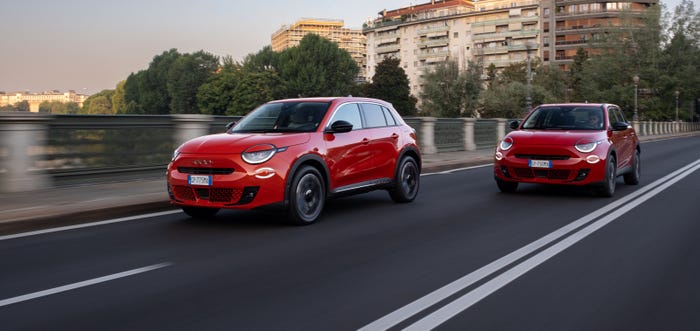Nissan Ponders Another Small CUV, Future in Minivan Segment
The Japanese automaker may need a more utilitarian entrant in the burgeoning small CUV group, a top Nissan official says.
July 10, 2014

NASHVILLE, TN – Nissan is exploring the possibility of adding another small CUV to its U.S. lineup, a top company official says.
The automaker already has an entrant in the burgeoning segment in the U.S., in the form of the design-and-performance-focused Juke. But it sees an opening for something more utilitarian that would go toe-to-toe with the upcoming Honda HR-V.
“The HR-V is different,” Pierre Loing, vice president-product planning for Nissan Americas, tells WardsAuto in an interview here this week during a Nissan full-line media preview. “It’s maybe less striking in design, offers more utility, so it’s kind of below a CR-V or (Nissan’s own) Rogue.
“In the future could we look at something like this? Possibly.”
Loing sees the Juke as more of a small-specialty model, akin to a Mini Cooper or Hyundai Veloster that prioritize appearance over people- or cargo-carrying capability.
If the HR-V, on sale late this year in the U.S., steals share from any Nissan model Loing, believes the Versa Note B-car is a more likely victim.
“I don’t really see (the HR-V) as a Juke competitor. I see it as rational…a small family (vehicle). Today we have (the) Versa Note for this.”
While the Juke was crafted for Europe to take on Mini, it has been a medium-sized hit in the U.S.
Nissan sold 38,157 Jukes here last year, the best tally for the model since it went on sale in the States in late 2010 as an ’11.
Last year the Juke topped combined sales (24,587) of the Mini Countryman and Paceman CUVs, and it also outsold the Veloster in 2013 by roughly 8,000 units. However, Juke sales fell short of the 41,915 Mini Coopers BMW sold last year, WardsAuto data shows.
While Nissan is looking to get into one segment it may be getting out of another. Loing says the automaker continues to ponder whether to field a minivan in the U.S.
“Do we stay in this segment or do we get out is an open question at this stage,” he says.
While the segment has stabilized, even grown, in the years since the current fourth-generation Quest minivan was launched in ’11, Nissan’s small share of the group has shrunk.
The Quest’s slice of WardsAuto’s Small Van segment fell from 2.2% in 2012 to 1.6% in 2013 and stood at 2.1% through June, down from 2.4% in the first six months of 2013.
“On the one hand, you could say (remaining in the segment is) worth it,” Loing says. “It’s a stable segment. Although (there are) not that many competitors, they’re strong.
“On the other hand it’s not very aspirational,” he continues. “It’s kind of (a) by-default (purchase) – ‘I’ll get this.’”
Loing is interested to watch the performance of the new Kia Sedona, due this fall in the U.S., as the Korean brand is trying to remove the stigma associated with a minivan.
Kia is casting the new Sedona as more of a peoplemover or CUV, rather than a minivan.
“I have doubts (about Kia’s positioning),” Loing says, noting buyers can get roughly the same benefits of a minivan today from a CUV.
Nissan tried to recast the third-generation Quest in ’04 as a sexy mom-mobile before going back to a family-oriented positioning for ’11.
Despite its shrinking presence in the minivan group with today’s Quest, Nissan has tried to make the best of the situation, adding content to the vehicle instead of steeply discounting it.
“Quest, today, I think is a great value story for what it is,” Loing says. “You get a lot of content for the price.”
You May Also Like



